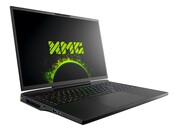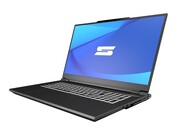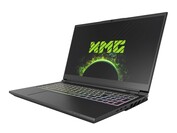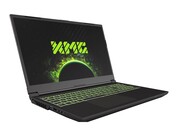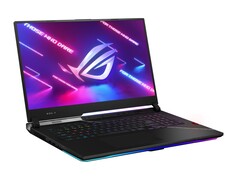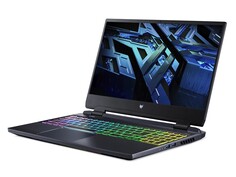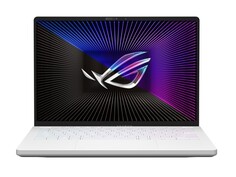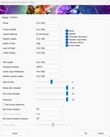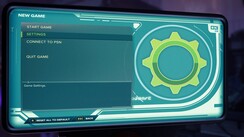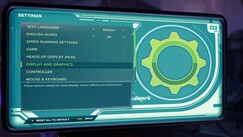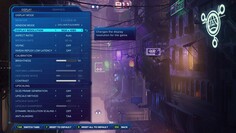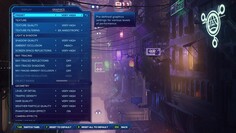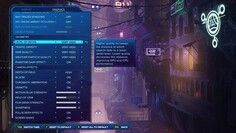Ratchet & Clank Rift Apart: Laptop and desktop benchmarks
Notebooks used in this review
We are currently running our gaming benchmarks with these notebooks. Clicking on the photos will take you to the respective manufacturer's homepage. All other test systems (tower PCs, mini PCs, ...) are listed at the end of the article.
Technical aspects
After the debacle around The Last of Us and its extreme VRAM requirements, we were very sceptical about Sony Entertainment's next PC adaptation in the run-up. But breathe a sigh of relief: Despite not exactly low system requirements, Rift Apart has not become an absolute hardware guzzler. The Dutch studio Nixxes Software, which was responsible for the PC version in this case, brings a lot of experience with it, whether it's through the last Deus Ex-, Tomb Raider- or Spider-Man-Parts.
Just like the PS5 original, Rift Apart also shines on the PC with very good to outstanding visuals, which are currently among the most beautiful and highest-quality on the respective platform. Whether textures, characters, effects or general richness of detail: The technology is on a high level, whereby the colorful comic look is, of course, a matter of taste.
The title also deserves great praise for the extensive graphics menu, which is conveniently accessible both outside and inside the game. The options have been divided into two tabs. While the display menu takes care of the resolution, the picture mode, the edge smoothing (SMAA, TAA and DLAA are available) and VSync, there are more than 20 individual settings in the graphics menu, which can partly be controlled automatically via preset.
In general, Rift Apart offers numerous modern features like upscaling (Nvidia DLSS, AMD FSR, Intel XeSS) and ray tracing (reflections, shadows, ambient occlusion) although the latter - as mentioned at the beginning - unfortunately cannot be activated on AMD GPUs yet. Owners of Nvidia chips from the RTX 4000 generation, on the other hand, can be happy about the presence of Frame Generation. The fact that there are no comparison pictures for the different settings can be forgiven in view of the available descriptions. Top: Changes to the graphics options do not require a restart of the game. Apart from one crash, Rift Apart ran stably in our benchmarks.
Benchmark
We use the beginning of the game for the speed measurements since the initial platform ride (see video) is very well suited for benchmarks due to the many figures shown and the identical sequence. The frame rate of the 25-second sequence is recorded with the tool CapFrameX. Although the title "only" plays in the third-person perspective, we would recommend at least 40 FPS because of the fast sequence (movement, fights, etc.).
Results
FHD (1,920 x 1,080)
As long as you limit yourself to 1,920 x 1,080 pixels, the system requirements are quite moderate. Although even one of the strongest iGPUs, the Radeon 680M, only supports low details in Full-HD with just under 30 FPS; current mid-range models like the Geforce RTX 4050, on the other hand, also manage high to maximum settings smoothly.
| Ratchet & Clank Rift Apart | |
| 1920x1080 Low Preset 1920x1080 Medium Preset AA:T 1920x1080 High Preset AA:T 1920x1080 Very High Preset AA:T | |
| NVIDIA GeForce RTX 4080, i9-12900K | |
| AMD Radeon RX 7900 XTX, i9-12900K | |
| NVIDIA GeForce RTX 4090 Laptop GPU, i9-13900HX | |
| NVIDIA GeForce RTX 4080 Laptop GPU, i9-13900HX | |
| NVIDIA GeForce RTX 3080 Ti Laptop GPU, i9-12900H | |
| NVIDIA GeForce RTX 4070 Laptop GPU, i9-13900HX | |
| NVIDIA GeForce RTX 3070 Ti Laptop GPU, i7-12700H | |
| NVIDIA GeForce RTX 4060 Laptop GPU, i9-13900HX | |
| NVIDIA GeForce RTX 4050 Laptop GPU, i9-13900HX | |
| AMD Radeon RX 6800S, R9 6900HS | |
| AMD Radeon 680M, R9 6900HS | |
QHD (2,560 x 1,440)
For QHD displays, it should tend to be a high-end GPU. For example, 2560 x 1,440 pixels and the Very High preset run with a GeForce RTX 3070 Ti smoothly.
| Ratchet & Clank Rift Apart | |
| 2560x1440 Very High Preset AA:T | |
| NVIDIA GeForce RTX 4080, i9-12900K | |
| AMD Radeon RX 7900 XTX, i9-12900K | |
| NVIDIA GeForce RTX 4090 Laptop GPU, i9-13900HX | |
| NVIDIA GeForce RTX 4080 Laptop GPU, i9-13900HX | |
| NVIDIA GeForce RTX 3080 Ti Laptop GPU, i9-12900H | |
| NVIDIA GeForce RTX 4070 Laptop GPU, i9-13900HX | |
| NVIDIA GeForce RTX 4060 Laptop GPU, i9-13900HX | |
| NVIDIA GeForce RTX 3070 Ti Laptop GPU, i7-12700H | |
| NVIDIA GeForce RTX 4050 Laptop GPU, i9-13900HX | |
UHD (3,840 x 2,160)
As usual, things really get going in the 4K range. A mixture of 3,840 x 2,160 pixels and the highest preset screams for a lot of VRAM and a GeForce RTX 3080 Ti or better.
| Ratchet & Clank Rift Apart | |
| 3840x2160 Very High Preset AA:T | |
| NVIDIA GeForce RTX 4080, i9-12900K | |
| AMD Radeon RX 7900 XTX, i9-12900K | |
| NVIDIA GeForce RTX 4090 Laptop GPU, i9-13900HX | |
| NVIDIA GeForce RTX 4080 Laptop GPU, i9-13900HX | |
| NVIDIA GeForce RTX 3080 Ti Laptop GPU, i9-12900H | |
| NVIDIA GeForce RTX 4070 Laptop GPU, i9-13900HX | |
| NVIDIA GeForce RTX 3070 Ti Laptop GPU, i7-12700H | |
| NVIDIA GeForce RTX 4060 Laptop GPU, i9-13900HX | |
| NVIDIA GeForce RTX 4050 Laptop GPU, i9-13900HX | |
Raytracing
The ray tracing performance varies greatly depending on the graphics card. For 1,920 x 1,080 pixels and maximum settings, for example, an RTX 4060. It gets curious with 3,840 x 2,160 pixels when DLSS (we chose the Quality setting) and Frame Generation are enabled. While the Desktop RTX 4080 and the Notebook RTX 4090 delivered (almost) identical rates in comparison to Full HD without DLSS and FG, the performance partly dropped extremely with weaker GPUs (see RTX 4050 to RTX 4070). Possibly, the VRAM is particularly heavily stressed here, so everything below 16 GB leads to problems.
| Ratchet & Clank Rift Apart | |
| 1920x1080 Very High Preset + Very High Raytracing AA:T 3840x2160 Very High Preset + Very High Raytracing + DLSS Quality + FG | |
| NVIDIA GeForce RTX 4080, i9-12900K | |
| NVIDIA GeForce RTX 4090 Laptop GPU, i9-13900HX | |
| NVIDIA GeForce RTX 4080 Laptop GPU, i9-13900HX | |
| NVIDIA GeForce RTX 3080 Ti Laptop GPU, i9-12900H | |
| NVIDIA GeForce RTX 4070 Laptop GPU, i9-13900HX | |
| NVIDIA GeForce RTX 4060 Laptop GPU, i9-13900HX | |
| NVIDIA GeForce RTX 3070 Ti Laptop GPU, i7-12700H | |
| NVIDIA GeForce RTX 4050 Laptop GPU, i9-13900HX | |
Note
Since gaming tests are very time-consuming and often restricted by installation or activation limits, we can only provide you with a part of the benchmarks for the publication of the articles. Further graphics cards will be installed later.
Overview
All test systems
| Device | Graphics card | Processor | Memory |
|---|---|---|---|
| Notebooks | |||
| XMG Neo 17 E23 | Nvidia GeForce RTX 4090 @175 W TGP (16 GB GDDR6X) | Intel Core i9-13900HX | 2 x 16 GB DDR5 |
| Schenker Key 17 Pro E23 | Nvidia GeForce RTX 4080 @175 W TGP (12 GB GDDR6X) | Intel Core i9-13900HX | 2 x 16 GB DDR5 |
| XMG Pro 15 E23 | Nvidia GeForce RTX 4070 @140 W TGP (8 GB GDDR6) | Intel Core i9-13900HX | 2 x 16 GB DDR5 |
| XMG Pro 15 E23 | Nvidia GeForce RTX 4060 @140 W TGP (8 GB GDDR6) | Intel Core i9-13900HX | 2 x 16 GB DDR5 |
| XMG Focus 15 E23 | Nvidia GeForce RTX 4050 @140 W TGP (6 GB GDDR6) | Intel Core i9-13900HX | 2 x 16 GB DDR5 |
| Asus ROG Strix Scar 17 | Nvidia GeForce RTX 3080 Ti @150 W TGP (16 GB GDDR6) | Intel Core i9-12900H | 2 x 16 GB DDR5 |
| Acer Predator Helios 300 | Nvidia GeForce RTX 3070 Ti @150 W TGP (8 GB GDDR6) | Intel Core i7-12700H | 2 x 8 GB DDR5 |
| Asus ROG Zephyrus G14 | AMD Radeon RX 6800S (8 GB GDDR6) & AMD Radeon 680M | AMD Ryzen 9 6900HS | 2 x 16 GB DDR5 |
| Tower PCs | |||
| Custom I | Nvidia GeForce RTX 4080 (16 GB GDDR6X) AMD Radeon RX 7900 XTX (24 GB GDDR6) |
Intel Core i9-12900K | 2 x 16 GB DDR4 |
| Custom II | Palit GeForce RTX 4090 GameRock OC (24 GB GDDR6X) Nvidia GeForce RTX 3090 FE (24 GB GDDR6X) Nvidia GeForce RTX 3060 Ti (8 GB GDDR6X) NvidiaTitan RTX (24 GB GDDR6) lNvidia GeForce RTX2070 Super (8 GB GDDR6) Nvidia GeForce RTX 2060 Super (8 GB GDDR6) KFA2 GeForce GTX 1660 Super (6 GB GDDR6) PNY GeForce GTX 1660 (6 GB GDDR5) KFA2 GeForce GTX 1650 Super (4 GB GDDR6) AMD RadeonRX 6950 XT (16 GB DDR6) AMD Radeon RX 6800 (16 GB DDR6) AMD Radeon RX 6700 XT (12 GB DDR6) AMD Radeon RX 6650 XT (8 GB GDDR6) AMD Radeon RX 6600 (8 GB GDDR6) AMDRadeon RX 5700 XT (8 GB GDDR6) AMD Radeon RX 5700 (8 GB GDDR6) AMD Radeon RX 5600 XT (6 GB GDDR6) AMD Radeon RX 5500 XT (8 GB GDDR6) |
AMD Ryzen 9 7950X | 2 x 16 GB DDR5 |
| Mini PCs | |||
| Minisforum NUCXi7 | Nvidia GeForce RTX 3070 @125 W TGP (8 GB GDDR6) | Intel Core i7-11800H | 2 x 8 GB DDR4 |
| Minisforum HX99G | AMD Radeon RX 6600M @100 W TGP (8 GB GDDR6) | AMD Ryzen 9 6900HX | 2 x 16 GB DDR5 |
| Morefine S500+ | AMD Radeon RX Vega 8 | AMD Ryzen 9 5900HX | 2 x 16 GB DDR4 |
| 4K monitors | operating system | Nvidia drivers | AMD drivers |
|---|---|---|---|
| Philips Brilliance 329P9H, Gigabyte M32U | Windows 11 | ForceWare 536.67 | Adrenalin 23.7.2 |





